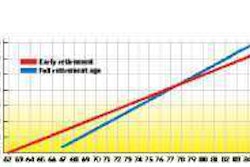Texting made the crash risk 23.2 times as high as non-distracted driving for truckers.

So when safety topics such as cell phone use arise, it’s easy for you to bristle. You know when it’s not safe to talk on the cell, or even to reach for a soft drink. You have enough sense not to consider anything as foolish as punching in a text message while driving.
Yet that one growing practice, perhaps the ultimate bait among the many shiny baubles that can capture a driver’s eyes, hands or mind, has triggered a new focus on driving distractions. As a result, U.S. Transportation Secretary Ray LaHood plans to hold a summit this month to address the dangers of text-messaging and similar distractions.
One big trigger behind that summons was a recently released Virginia Tech study. You might find its conclusions, which in some ways rank you with those air-headed teens, hard to swallow. For example:

• For truckers, dialing a cell phone made the risk of crash or near-crash 5.9 times as high as non-distracted driving. For four-wheelers, the rate is half (2.8). Simply talking or listening increased the risk slightly for four-wheelers and not at all for truckers.
• For truckers, reaching for an electronic device made the crash risk 6.7 times as high as non-distracted driving. For four-wheelers, the rate is less than a fourth of that (1.4).
Texting, though, is by far the worst. It made the crash risk 23.2 times as high as non-distracted driving for truckers, according to the study, which released no comparable data on four-wheelers.
Virginia Tech’s research showed that during the average texting session, six seconds, eyes were off the road for 4.6 seconds. That’s an eternity in the world of high-speed highway travel, where split-second reflexes determine life or death. Texting has been linked to fatal crashes, including one where a Florida trucker admitted to texting moments before a collision with a school bus that killed a student.
The last thing we want is more government intrusion, especially into private workspaces. As for bans on activities while driving, whether it be texting or drinking coffee, there are obvious challenges with enforcement. As LaHood noted, “Laws aren’t always enough. We’ve learned from past safety awareness campaigns that it takes a coordinated strategy combining education and enforcement to get results.”
Most truckers have enough sense to avoid foolish driving behaviors. For those few truckers and numerous four-wheelers who don’t, education penetrates only so many thick skulls. Enforcement of a good law, however flawed, is one more tool. It would be welcome – in strong doses – for anyone reckless enough to text while driving.











